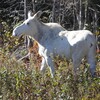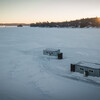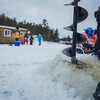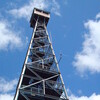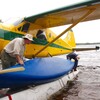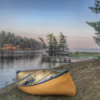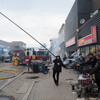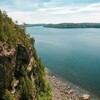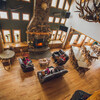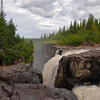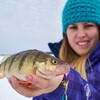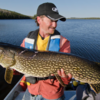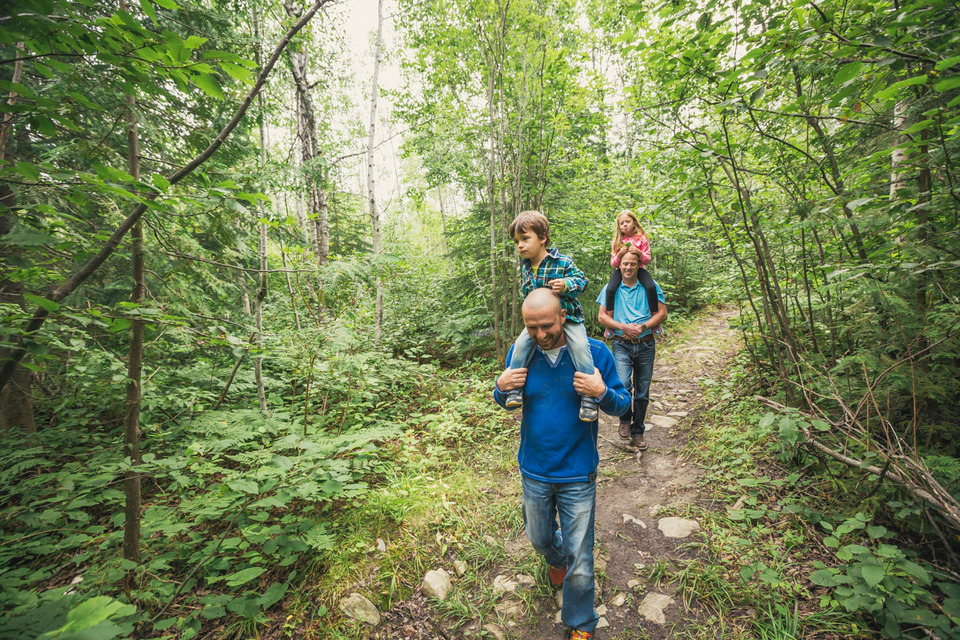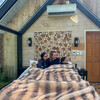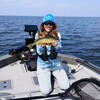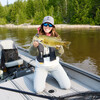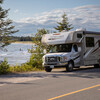Snowshoeing in Northeastern Ontario
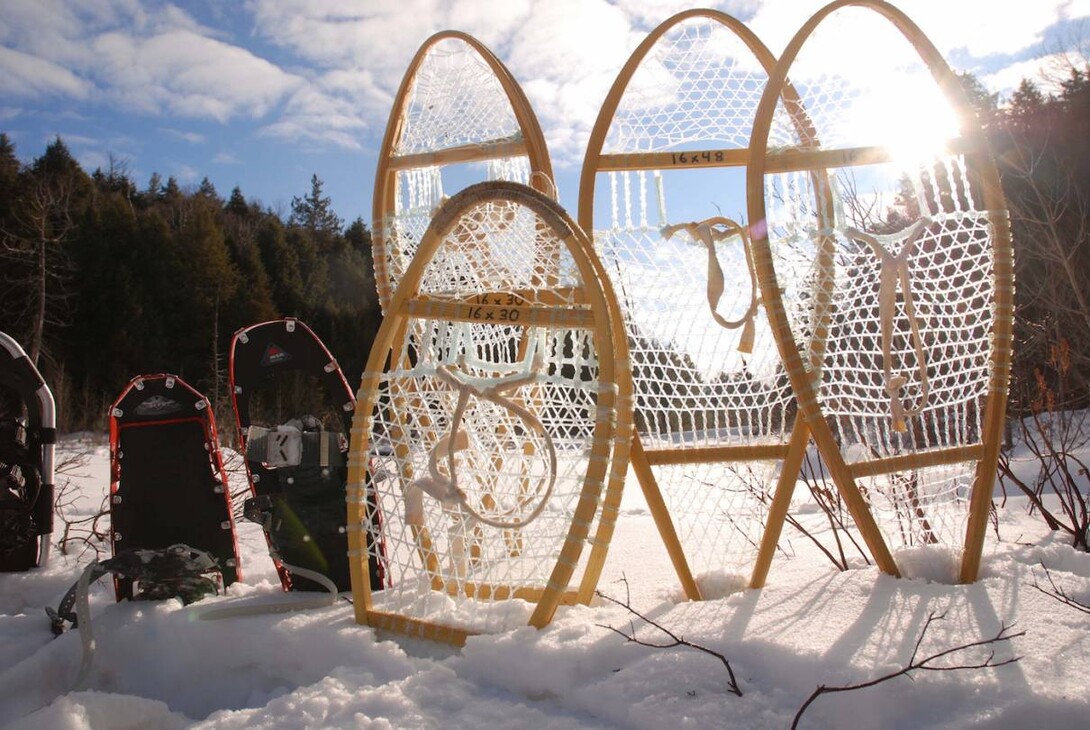
Snowshoeing is one of the best ways to explore winter. It’s a relatively inexpensive sport that doesn’t depend on a lot of sophisticated gear or a strong skill set. That’s why it’s hitting the mainstream in a big way and more and more places are offering snowshoeing trails across the Northeastern Ontario region.
Ontario Parks Are Open
Provincial Parks like Windy Lake and Killarney have dedicated trails for snowshoeing, and also have the added bonus of providing heated yurts to camp in. Samuel de Champlain and Kettle Lakes Provincial Parks also offer a great area to snowshoe. One hidden gem is Mashkinonje Provincial Park. It’s a protected nature reserve that stretches from the West Bay to the West Arm of Lake Nipissing. The area has over 30 kilometres to choose from. The Loudon Peatland Trailhead is at the park entrance located off of Highway 64, 17 kilometres south of the town of Lavigne and Musky Island Road. A great contact for information and a route map is the Friends of Mashkinonje.
End the Day With a Room and a Good Meal

A good number of private lodges across the northeastern region provide snowshoeing packages; places like Sudbury’s Sportsman’s Lodge or North Bay’s Clarion Resort Pinewood Park. Having a nice room and good meal after spending a day snowshoeing the frozen woods is the perfect way to spend a winter weekend.
Being Bowlegged Helps
Being bowlegged has its advantages, of course. I excel at the art of the snowshoeing simply because I’m bowlegged. It’s not something I’m proud of—but my slight disability has won me a few snowshoe races in my time. One doesn’t have to be bow-legged to snowshoe but it does have its benefits. The only real issue in the sport is to choose which design of snowshoe you prefer—traditional or modern.
Traditional Snowshoes
When dealing with traditional there’s four main categories. For walking across flat, semi-open terrain the proper style would be the Michigan or Algonquin snowshoe. It’s the most common model and is shaped like a teardrop with its tail lagging behind to track a straight line and keep the tips out of the snow.
In hilly or mountainous country, the standard bear-paw style is more commonly used. With no tail it makes walking easier. I also use the bear-paw in early Spring for walking through deep, crusty, corn snow.
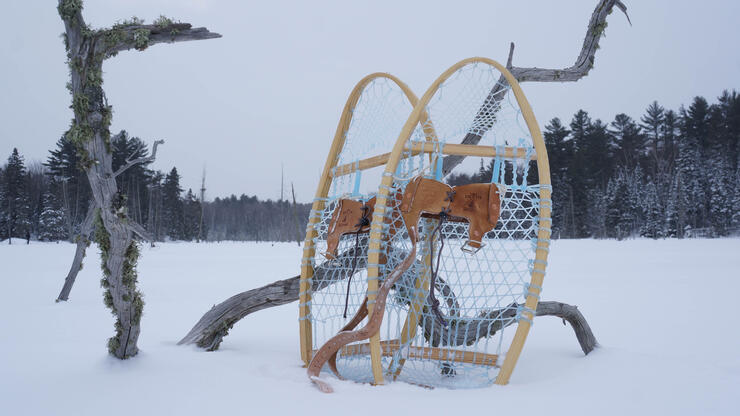
The other main styles of snowshoe are the Ojibwa and the Alaskan. The Ojibwa is used for open areas, with its long length and upturned toe giving extra support and stability. The shoe’s tip is pointed, looking like the back end of the Michigan or Algonquin style, and can actually help cut through the hard crust of snow or push away small saplings when walking in dense bush. The Alaskan is quite similar, except the toe is rounded.
New-Age Style
All these styles are made of wood and lacing. However, outdoor stores are now more opt to carry the new-age snowshoes made of lightweight plastic or anodized aluminum equipped with mini-crampon bindings. I still prefer the wooden type when it comes to deep snow. The new-age ones are a lot lighter, however, and most deal extremely well with climbing up slippery slopes.
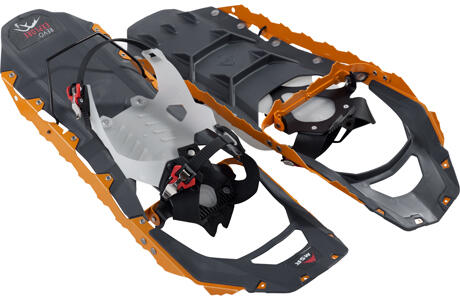
My MSR Explore snowshoes are fantastic. They’re lightweight with an amazing binding system that doesn’t need to be fiddled with every few minutes. In fact, having the perfect binding to hold your foot in place is extremely critical. There’s nothing worse than messing around with an awkward binding system when your hands are numb with cold. There’s an endless assortment, ranging from the simple Native hitch to a piece of old inner tubing. The most common binding, however, is a combination of a wide toe-piece and a leather heel strap with a cross strap over the instep. A single ski pole also comes in handy when trying to keep your balance in deep snow or drudging up steep inclines.
Boots and Bindings
After the binding comes the boot. Oil-tanned moccasin boots worn with one light pair and one heavy pair of wool socks work great. A winter companion of mine raves about his pair of moccasins with the upper section of the boot made of thick canvas material. He purchased them from a Native living in the far north where the snow is always dry and crisp. In wet snow, however, his feet soon become soaked and adding more oil just keeps his feet from breathing and they sweat uncontrollably.
I find a good old pair of felt-lined boots with rubber bottoms and leather tops to be adequate. Or those rubber boots with liners you can pick up cheap at Canadian Tire. They’re on the heavy side, give me blisters, and at times can be too warm to wear comfortably, but with an extra pair of interchangeable liners in my pack I haven’t lost a toe from frostbite yet.
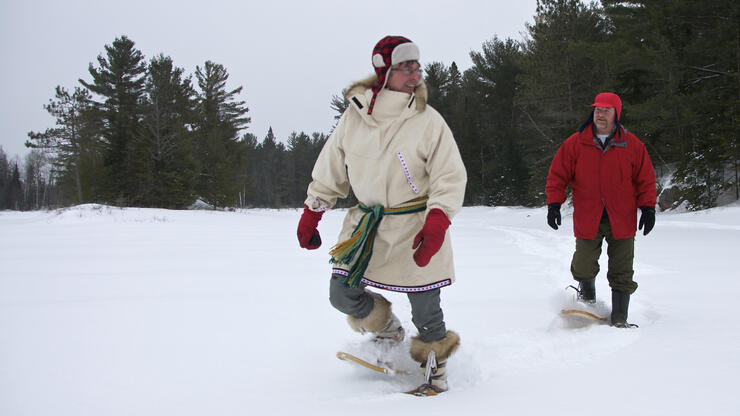
7 Helpful Snowshoeing Tips:
- Walking with snowshoes lashed to your feet is a little different than strolling down the sidewalk wearing a pair of sneakers, the width of the snowshoe forces you to swing each foot around in a semi-circular motion.
- Ski poles help to keep your balance and assist you to get up when you actually do fall down.
- Lurch forward on every step and let the snowshoe sink into the snow a bit to get a firm grip for the follow-through step.
- To turn, kick straight out (with the left leg if you’re going left and visa-versa if you’re going right). Then twist 180 degrees with that leg and follow through with the other leg (ski poles will help you greatly here).
- Descend a hill in a zigzag pattern and lean back a little. Make sure the bindings are tight enough to keep your toes in place. And if the slope is too steep, place one foot in front of the other, sit on the back snowshoe, and slide down.
- Make sure to also zigzag uphill and make good use of your ski poles.
- Be happy you’re bow-legged. It’s definitely a plus!
Recommended Articles
The Seven's Best Hikes, Biking Trails and Lakes

7 Best Spots to Check Out in The Seven

Budget Bliss: Explore Northeastern Ontario Without Breaking the Bank

Bring Your Fam!

Time to Unwind: 6 Spa Havens to Discover In The Seven
5 Amazing Places to SUP in Northeastern Ontario

5 Amazing Bike Rides to Discover

Northern Lights in Northeastern Ontario

Northeastern Ontario's Best Pride Festivals

Fish for one of the World's Rarest Species of Trout

An Insider's Guide to Manitoulin Island

6 Small-Town Gems to Explore in Northeastern Ontario

11 Best Things to Do in Kapuskasing, Ontario



